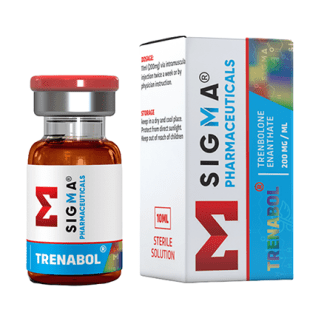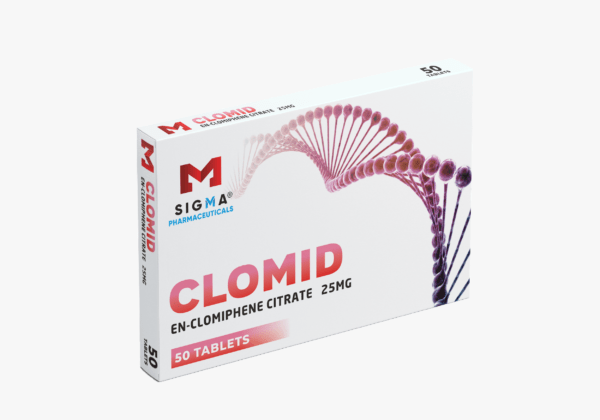A Safe and Effective Treatment for Male Hypogonadism That Preserves Fertility
Male hypogonadism is a condition in which your body doesn’t produce enough testosterone, the hormone that plays a key role in masculine growth and development during puberty, or enough sperm, or both. Testosterone is produced by specialized cells in your testicles (gonads) known as Leydig cells, and is a type of hormone known as an androgen. Very small quantities of testosterone are also produced by your adrenal glands, which sit atop your kidneys. Androgens are a class of hormones responsible for the development of secondary male sex characteristics such as the growth of facial and body hair, deepening of the voice, and growth of the testicles and penis, as well as bone and muscle development.
A deficiency in testosterone can initially present as a decrease in your sex drive, fatigue, decreased energy, and even depression. If not treated, testosterone deficiency can lead to the loss of the ability to have an erection, decreased sperm production, a loss of muscle and bone mass, and can even lead to the development of breast tissue, known as gynecomastia. First, let’s look at the causes and types of male hypogonadism, plus how it’s diagnosed. Then we’ll take a look at treatments, ending with an interesting and relatively new compound Androxal, that unlike many other testosterone-based treatments, does not negatively affect sperm.
Causes of Hypogonadism - Two Types
There are many causes of male hypogonadism but there are two basic types: primary and secondary. Primary hypogonadism stems from a problem with the testicles and is sometimes referred to as testicular failure. Secondary hypogonadism is actually a problem in a part of the brain, either the hypothalamus or the pituitary gland. The hypothalamus releases gonadotropin-releasing hormone which travels to your pituitary gland and triggers it to release another substance known as luteinizing hormone, known as LH. The LH then goes to your testicles where it stimulates the production and the release of testosterone.
The level of testosterone in your bloodstream is controlled by an elegant feedback loop that works like this: as the level of testosterone in your bloodstream rises, it damps down the production of gonadotropin-releasing hormone made by your hypothalamus and this helps to maintain a normal level of testosterone in your body. This means that if any of these areas; your hypothalamus, your pituitary gland or your testicles themselves, are not functioning as they should, that dysfunction can cause low testosterone.
Another reason for low testosterone is the use of anabolic steroids, commonly used by some bodybuilders in an effort to build muscle bulk, as steroids can not only decrease the function of the testicles, leading to low testosterone levels and actual shrinkage of the testicles, these steroids can also cause a decrease in sperm production.
Low testosterone levels due to hypogonadism is not a rare condition, with one study showing 11.8 percent of males (in 3219 men studied) between the ages of 49 to 79 having secondary hypogonadism, meaning a problem in the hypothalamus or pituitary. Another study showed 38.7 percent of males (in 2162 men studied) 45 years of age or older had primary hypogonadism, meaning there was a problem with the testicles. Hypogonadism is seen much more commonly in older men as well as men who are obese or who have type 2 diabetes.
Diagnosis and Treatment
Male hypogonadism is diagnosed by a combination of a physical exam and a blood test, usually taken in the morning when testosterone levels are highest. If your testosterone levels are low, then further testing can be required to determine if it’s primary or secondary hypogonadism. These tests can include additional hormone testing, a semen analysis, imaging studies of the pituitary gland and may also include genetic testing and a testicular biopsy. Treatment of primary hypogonadism may involve prescribing pituitary hormones to stimulate the production of sperm, or if a pituitary tumor is found, this may necessitate surgical removal, radiation, or medication, plus replacement of additional hormones for which the pituitary is responsible.
Testosterone Replacement Therapy
Treatment of secondary hypogonadism in adult males commonly involves testosterone hormone replacement therapy, known as HRT. Testosterone replacement therapy is not given orally, as oral preparations can cause liver problems, and they do not keep the levels of testosterone at a steady state. There are various ways to administer testosterone that bypass the oral route and these include gels, patches, injections, implantable pellets, and gum, as well as a nasal gel.
Testosterone replacement therapy does come with some risks which include enlargement of the prostate gland, enlarged breasts, the development of acne, an increase in the production of red blood cells, a decrease in sperm production with subsequent infertility, and sleep disturbances. The testicles may also decrease in size, known as testicular atrophy. Men on long term administration of testosterone may completely lose their ability to produce testosterone naturally and may have to rely on an artificial source for life.
Treatment with hCG
In an attempt to preserve fertility in men with low sperm counts who still wish to have children, an injectable hormone known as hCG (Ovitrelle) is sometimes used. This hormone may also work to prevent testicular atrophy, and is used alone (known as hCG monotherapy) or in combination with testosterone injections. HCG works to stimulate the Leydig cells in the testicles, resulting in testosterone production. Side effects of hCG can include breast enlargement, stomach pain, nausea and vomiting, and pain, redness and swelling at the site of the injection.
Treatment with Clomid
Some physicians use clomiphene citrate (trade name Clomid) as an off-label drug to treat male hypogonadism in men who want to try to preserve their fertility. Off-label use simply means the use of a drug for a condition for which it is not formally approved, and is a fairly common practice in the medical community. Clomid is approved for use in women to induce the ovaries to produce eggs but can also be effective in men to increase blood testosterone levels by increasing the levels of the hormones LH and FSH, both produced in the pituitary gland. Clomid has an interesting way of working by making your brain think there is not enough testosterone and forcing the body to increase its natural production. Like any other drug, Clomid comes with its list of possible side effects including blurry vision, mood swings, acne, weight gain, and chest tenderness. Although Clomid may improve sperm motility (movement) in some men, it also may reduce total sperm count.
Treatment with Androxal
Another treatment for male hypogonadism is enclomiphene citrate (trade name Androxal) works to increase the body’s natural production of testosterone, rather than simply attempting to replace it. Androxal increases blood testosterone levels by increasing the levels of the hormones LH and FSH, both produced in the pituitary gland. One of the big advantages of enclomiphene citrate is that it does not negatively affect sperm. Enclomiphene is actually part of the drug Clomid, which is composed of two isomers: zuclomiphene citrate and enclomiphene citrate. An isomer is simply a compound that has the same chemical formula (the same number of atoms) but those atoms are arranged differently.
Products
-
 TRENABOL
Rated 5.00 out of 5From $75.65
TRENABOL
Rated 5.00 out of 5From $75.65
In studies comparing zuclomiphene citrate, enclomiphene citrate and Clomid, which is a combination of the two isomers, zuclomiphene had persistent side effects that were not seen with enclomiphene citrate alone. In fact, the research data showed that zuclomiphene was found to actually work against the desired treatment effects. In addition, the way the two isomers perform in the body is very different, as the two compounds have very different biological half-lives. The half-life of a drug is simply the time required for half the amount of the drug to be eliminated by the body. Enclomiphene reaches a peak concentration in the blood in 4 hours with a half-life of 8 hrs, while zuclomiphene takes nearly twice as long to reach peak blood concentration and has a considerably longer half-life of greater than 40 hours. These marked differences in pharmacology between the two isomers were responsible for medical researchers to call for the development of the pure compound enclomiphene as a treatment for male hypogonadism.
In one study, mild side effects of enclomiphene, including headache and nausea, were seen in fewer than 4 percent of patients who participated. Other possible side effects can include increased sex drive (libido) and acne. In a randomized Phase III clinical trial, where enclomiphene was compared with testosterone gel in men with low testosterone and low or normal levels of LH, the men who received enclomiphene received either 12.5 mg or 25 mg of the drug daily. The group who got testosterone replacement received AndroGel 1.62 percent and all patients were followed for five months.
Enclomiphene citrate appears to be a safe and effective solution in younger men with hypogonadism who do not wish to compromise their fertility. For older men, enclomiphene could be used as a standalone therapy, especially if the risks of testosterone are judged to be too high for some individuals. Androxal comes in 12.5 mg or 25 mg doses to be taken by mouth.
The results for the men who received Androxal were impressive, as blood testosterone levels were restored to normal after 16 weeks and LH and FSH increased. At the same time, the drug maintained the men’s sperm concentrations. Addroxal’s effects on both LH and total testosterone persisted, even after the study ended and treatment was stopped. The Androgel group’s testosterone levels were also normalized but their sperm concentrations declined, due to suppression of their testicular function. In addition, LH and FSH levels decreased in the Androgel group.
References -
Tajar A, Forti G et al. Characteristics of secondary, primary, and compensated hypogonadism in aging men: evidence from the European Male Ageing Study. J Clin Endocrinol Metab. 2010 Apr;95(4):1810-8. doi: 10.1210/jc.2009-1796. Epub 2010 Feb 19. PMID: 20173018.
Mulligan T., Frick M.F., Zuraw Q.C., Stemhagen A., McWhirter C. Prevalence of hypogonadism in males aged at least 45 years: the HIM study. Int J Clin Pract. 2006 Jul 1; 60(7): 762–769. doi: 10.1111/j.1742-1241.2006.00992.x
NIDA. 2021, April 12. What are the side effects of anabolic steroid misuse?. Retrieved from https://nida.nih.gov/publications/research-reports/steroids-other-appearance-performance-enhancing-drugs-apeds/what-are-side-effects-anabolic-steroid-misuse on 2022, October 3
Genchi VA, Rossi E, Lauriola C, D’Oria R, Palma G, Borrelli A, Caccioppoli C, Giorgino F, Cignarelli A. Adipose Tissue Dysfunction and Obesity-Related Male Hypogonadism. International Journal of Molecular Sciences. 2022; 23(15):8194. https://doi.org/10.3390/ijms23158194
Krzastek SC, Sharma D, Abdullah N, et al. Long-Term Safety and Efficacy of Clomiphene Citrate for the Treatment of Hypogonadism. J Urol. 2019;202(5):1029-1035. doi:10.1097/JU.0000000000000396
Wiehle R & Fontenot GK. Clomid has got a bright side and a dark side. What do we really know after all these years? Evidence for toxicity. Fertility and Sterility – Vol 104( 3), Supplement, E12, September 01, 2015 DOI:https://doi.org/10.1016/j.fertnstert.2015.07.037
Rodriguez, K. M., Pastuszak, A. W., & Lipshultz, L. I. (2016). Enclomiphene citrate for the treatment of secondary male hypogonadism. Expert opinion on pharmacotherapy, 17(11), 1561–1567. https://doi.org/10.1080/14656566.2016.1204294
Huang ES, Miller WL. Estrogenic and antiestrogenic effects of enclomiphene and zuclomiphene on gonadotropin secretion by ovine pituitary cells in culture. Endocrinology. 1983;112(2):442-448. doi:10.1210/endo-112-2-442
Helo, S., Mahon, J. et al. MP76-08 Serum Levels Of Enclomiphene And Zuclomiphene In Hypogonadal Men On Long-term Clomiphene Citrate Treatment. The Journal of Urology, April 2016, Vol 195, Is 4s, pp. e1009-e1010. https://doi.org/10.1016/j.juro.2016.02.1859
Kim ED, McCullough A, Kaminetsky J. Oral enclomiphene citrate raises testosterone and preserves sperm counts in obese hypogonadal men, unlike topical testosterone: restoration instead of replacement. BJU Int. 2016;117(4):677-685. doi:10.1111/bju.13337
Earl JA, Kim ED. Enclomiphene citrate: A treatment that maintains fertility in men with secondary hypogonadism. Expert Rev Endocrinol Metab. 2019 May;14(3):157-165; https://pubmed.ncbi.nlm.nih.gov/31063005/

